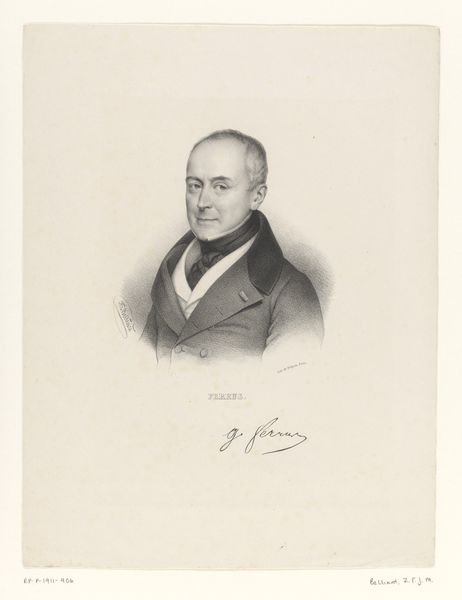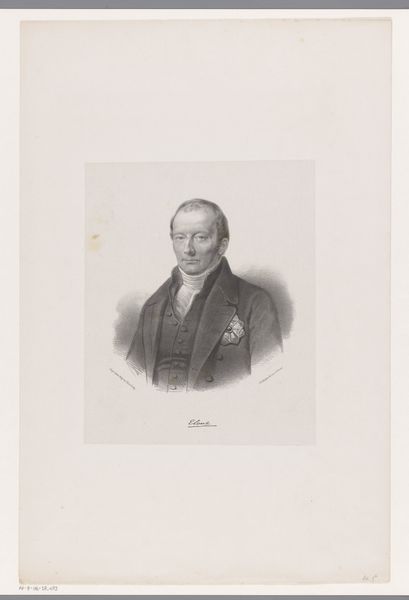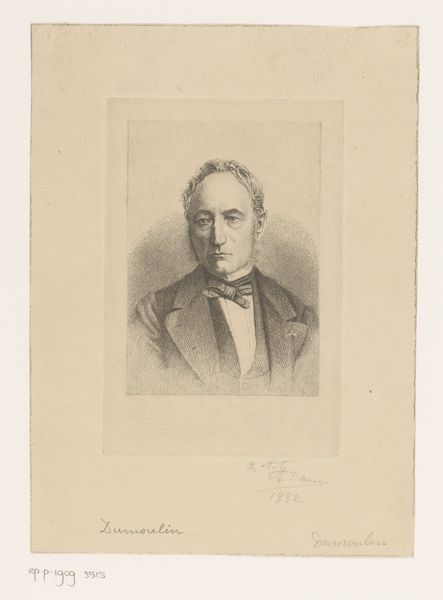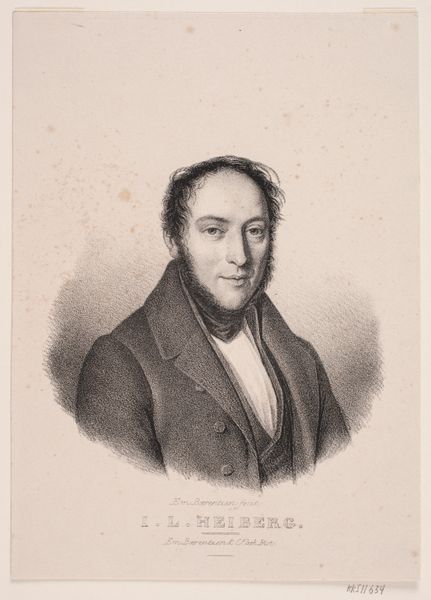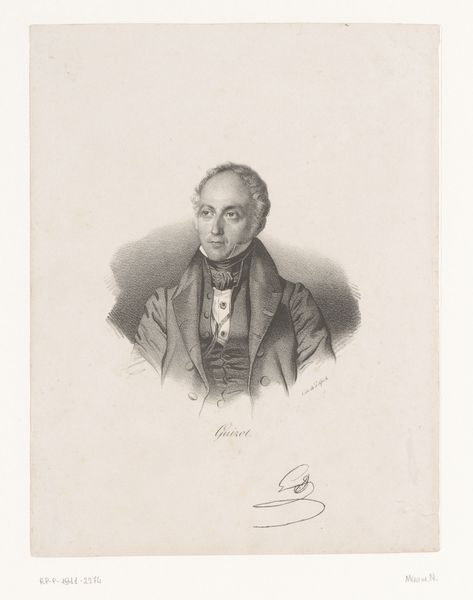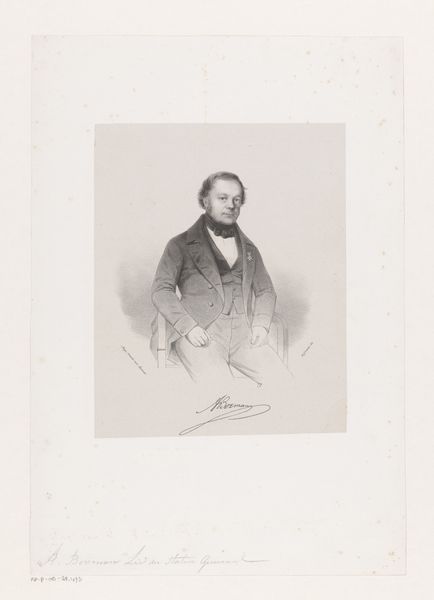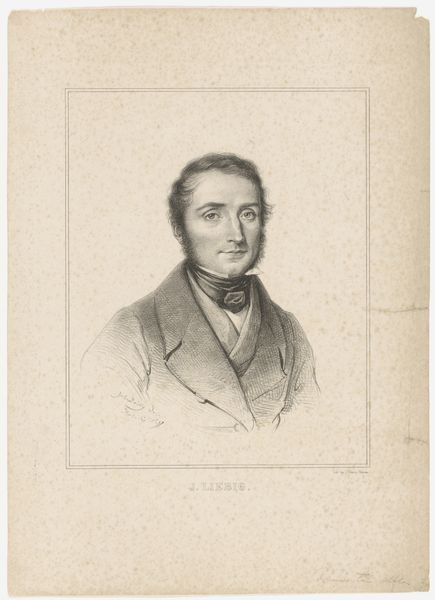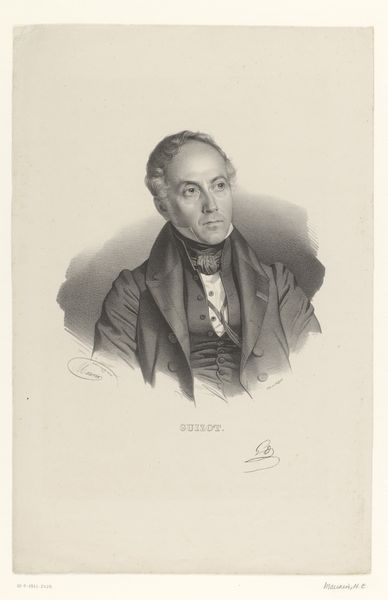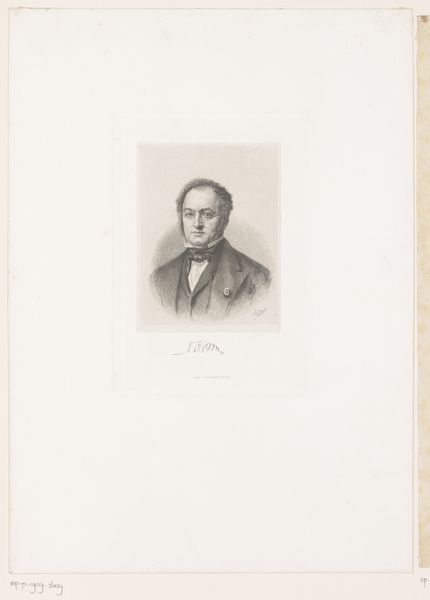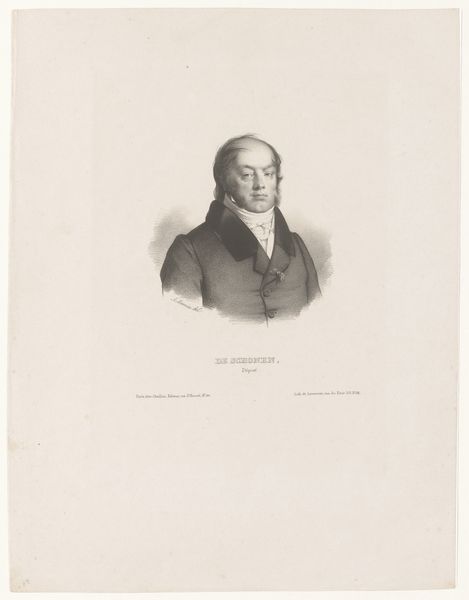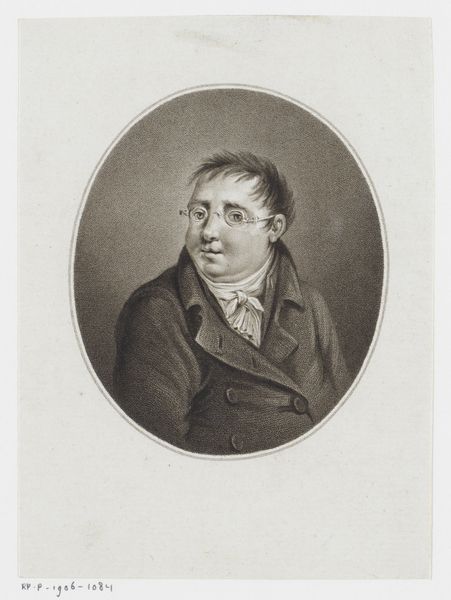
print, paper, engraving
#
portrait
#
neoclacissism
# print
#
paper
#
line
#
history-painting
#
engraving
#
realism
Dimensions: height 400 mm, width 292 mm
Copyright: Rijks Museum: Open Domain
This is a portrait of Philippe Pinel, made by Pierre Roch Vigneron, who was active in the 19th century. It's rendered with lithography, a printing technique that was still relatively new at the time. Lithography involves drawing on a flat stone or metal plate with a greasy crayon, then treating the surface so that ink adheres only to the drawn areas. This print would have been made through the work of a skilled artisan, who could achieve subtle tonal variations. Lithography allowed for the relatively quick reproduction of images. It democratized the circulation of portraits, making them available to a broader public beyond the wealthy elite. In many ways, lithography represents a shift in the relationship between art, labor, and industrial production. It was part of a larger trend towards the mechanization of image-making, which had profound implications for the status of the artist and the nature of creative work. This portrait embodies this transition, balancing artistic skill with the efficiency of mechanical reproduction. It invites us to consider how techniques of production shape both the form and the social context of art.
Comments
No comments
Be the first to comment and join the conversation on the ultimate creative platform.
